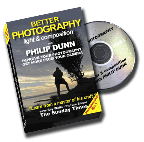 The ‘reflection’ theme is a regular subject for camera club competitions, and rightly so. It’s a theme that’s open to all sorts of imaginative interpretations - from abstract ideas to perfectly symmetrical mirror images.
The ‘reflection’ theme is a regular subject for camera club competitions, and rightly so. It’s a theme that’s open to all sorts of imaginative interpretations - from abstract ideas to perfectly symmetrical mirror images.
The idea of including mirrors to reveal an part of a subject that is out of the framed picture itself is far from new – artists have been using it for hundreds of years in portraits and interior paintings. The effect can be to bring an intriguing illusion of the third dimension to a two-dimensional iamge. Done well, it can also inject a sense of mystery, compelling the viewer to look more closely – and so get drawn into your composition.
The mirror inside Lincoln Cathedral (picture above right), was positioned so that visitors could see the roof without craning their necks. I preferred to photograph the stained glass windows through it. I used a small aperture, f16, which meant I needed a slow shutter speed of 1/4sec. The camera was put on a tripod. Using the centre-weighted exposure mode, a light reading was taken from the window’s reflection, this has underexposed the interior of the cathedral – just the sort of contrast I wanted
Simple reflections can virtually double the amount of colour, form and interest within your picture. They can reveal the most amazing abstract shapes by breaking up the form into waving patterns of colour and shape. In town, reflected images seem to be everywhere we look, even more so in our modern cities with their glass-sided office towers. There are reflections in shop windows, pools and puddles – even the polished paintwork of cars can reflect interesting images worth photographing. Intriguing contrasts can be created when new glass office blocks reflect older architecture. Perfectly still water can mirror buildings, people and landscape, but lightly rippled water can sometimes produce even more interesting photographs – back to those abstracts again.
In town, reflected images seem to be everywhere we look, even more so in our modern cities with their glass-sided office towers. There are reflections in shop windows, pools and puddles – even the polished paintwork of cars can reflect interesting images worth photographing. Intriguing contrasts can be created when new glass office blocks reflect older architecture. Perfectly still water can mirror buildings, people and landscape, but lightly rippled water can sometimes produce even more interesting photographs – back to those abstracts again.
Each pane of glass in this tower block has distorted the reflection of the building behind the camera., creating an abstract design. The window cleaners’ box has helped bring a sense of reality to the picture and added a focal point to the pattern
Next - in Part 2, water reflections
15 Dec 2007
Photographing reflections - part 1
Subscribe to:
Post Comments (Atom)


2 comments:
I wonder if I could take a photo of one of my subjects, reflecting myself in a window? This is inspiring. Thanks for taking the time to consistently post.
THIS IS A NEW DAILY READ FOR ME.
Yes, it's all too easy to see yourself in the mirror - especially when you are trying not to. Just remember the simple rules of lighting. Light yourself and the subject from the side. Do not try to use front lighting (direct from the camera). If in doubt - press the button and give it a try.
Philip
Post a Comment